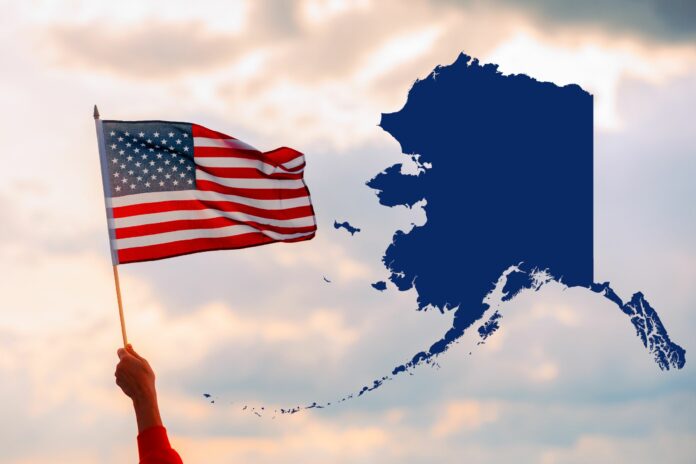Some 36 percent of Alaska residents would support the state breaking away from the United States and becoming a fully independent nation, according to a new poll.
The result made Alaskans the most likely to support their state seceding from the Union, with the result substantially above the national average of 23 percent. The survey of 35,307 U.S. adults was conducted by YouGov between February 2 and 5. Those questioned were asked whether they would “support your state seceding from the U.S.?”
The integrity of the U.S. has been the subject of intense debate amidst aggressive political partisanship, which saw the 2020 presidential election result contested by the losing candidate for the first time in modern American history.
In February 2023, House Republican Marjorie Taylor Greene suggested there could be a”national divorce” between Republican and Democratic states resulting in almost all powers stripped from the federal government and devolved to the state level.
The YouGov survey found that across the U.S., 23 percent of adult Americans would back their state leaving the American Union, versus 51 percent who would be actively opposed and 27 percent unsure. Notably, the result differed substantially by party, with 29 percent of Republicans wanting the state they lived in to become independent against 46 percent opposed. For Democrats, just 21 percent said they would back their state leaving the U.S., with 51 percent actively opposed.
After Alaska, the states with the highest proportion of adults supporting independence were Texas at 31 percent, followed by California at 29 percent, and New York and Oklahoma each at 28 percent. By contrast, just 13 percent of those living in Minnesota wanted the state to secede from the U.S., along with 14 percent each of those living in Ohio, Massachusetts, and Rhode Island.
The Alaskan Independence Party (AIP) was founded in the 1970s to campaign for a referendum on the state becoming fully independent and became a recognized political party under state regulations in 1984. It received its strongest electoral performance in the 1994 Alaska gubernatorial election, when it polled 13 percent of the vote coming a clear third behind the Republicans at 40.8 percent and the Democrats at 41.1 percent, though this was very much a high watermark and the party received less than one percent of the vote in the 2002 and 2006 gubernatorial elections.
Along with a referendum, the party advocates the abolition of all property and income taxes, supports “all efforts to curtail or eradicate abortion, euthanasia and infanticide” and opposes “the borrowing of money by government for any purposes other than for capital improvements.”
Getty/Newsweek
Earlier this month, Newsweek published an exclusive survey of 814 eligible voters in Texas, conducted by Redfield & Wilton Strategies online between February 1 and 3, which asked participants: “Should Texas be a state within the United States or should Texas be an independent country?”
In response, 23 percent opted for “an independent country,” and 67 percent wanted to remain part of the U.S., with the remaining 10 percent unsure.
Secessionist campaigners have also been active in New Hampshire where a Republican legislature introduced a bill to the state House of Representatives calling on the state to become fully independent should U.S. debt reach $40 trillion, up from the current level of $34 trillion.
Speaking to Newsweek, Carla Gericke, acting president of the Foundation for New Hampshire Independence, described secession from the United States as “an idea whose time has come and a reflection of the frustration everyone on the political spectrum is feeling.”
Uncommon Knowledge
Newsweek is committed to challenging conventional wisdom and finding connections in the search for common ground.
Newsweek is committed to challenging conventional wisdom and finding connections in the search for common ground.


